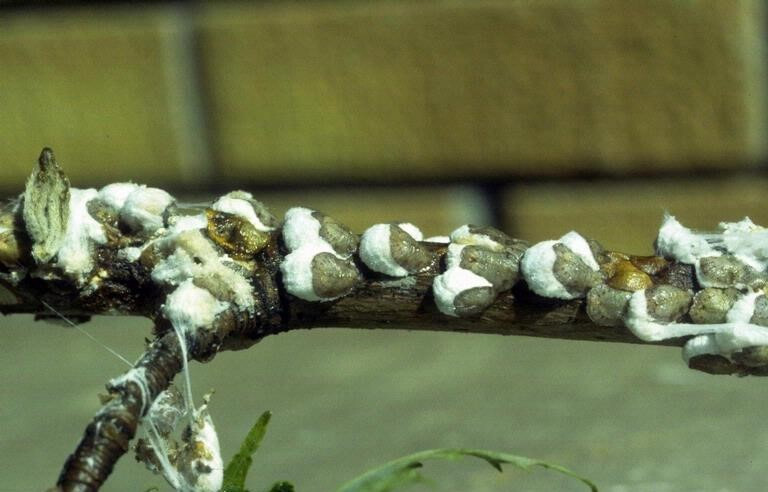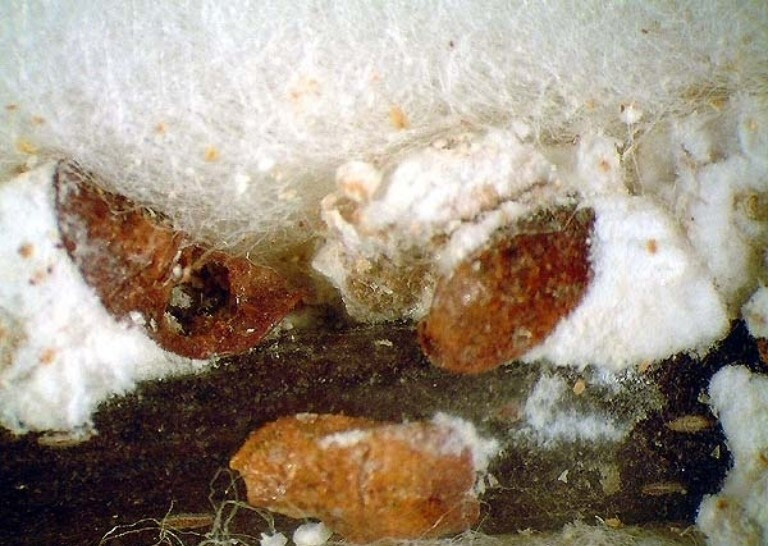Cottony Maple Scale (Pulvinaria innumerabilis)

Figure 1. Cottony maple scale on a maple branch. Photo by E. Nelson. Bugwood.
Host
Hackberry, honey locust, linden, maple, and boxelder trees.
Damage and Symptoms
The scale damages its host plant by sucking the sap from the tree, which can cause dieback of twigs and branches. It secretes excessive honeydew as a waste product. This can be unattractive underneath the tree, can attract nuisance wasps, and can also attract sooty mold.

Figure 2. Cottony maple scale adults. Photo by D. Blackford, USFS. Bugwood. Larger image (153KB).
Life Cycle
The scale overwinters as a fertilized adult female on branches of the tree. Feeding activity resumes in the spring. A waxy, cottony egg sac is produced in late spring. Egg hatch occurs in late June through July, and the crawlers then move to the leaves.
Management
Cottony maple scale is attacked by several natural enemies, including lady beetles, predatory flies and wasps, and sparrows. Dormant oils can be used in early spring prior to bud break. The crawlers are clear and flattened and can be monitored with a white piece of paper placed underneath the vegetation. Contact insecticides, such as bifenthrin and permethrin, can be applied to the crawler stage of the scale (late June through July). Systemic insecticides, such as the active ingredients imidacloprid and dinotefuran, can be applied in the spring.
Further Information
To learn more about the topics discussed on this page, contact the Schutter Diagnostic Lab. If you suspect an infestation on your property, contact your local extension agent, the Schutter Diagnostic Lab at Montana State University, or the Montana Department of Agriculture.
This fact sheet is also available as a printable PDF (274KB).
Disclaimer: These recommendations are provided only as a guide. It is always the pesticide applicator’s responsibility, by law, to read and follow all current label directions for the specific pesticide being used. The authors and Montana State University assume no liability resulting from the use of these recommendations. The Montana State University Extension Service is an ADA/ EO/AA/Veteran’s Preference Employer and Provider of Educational Outreach.
